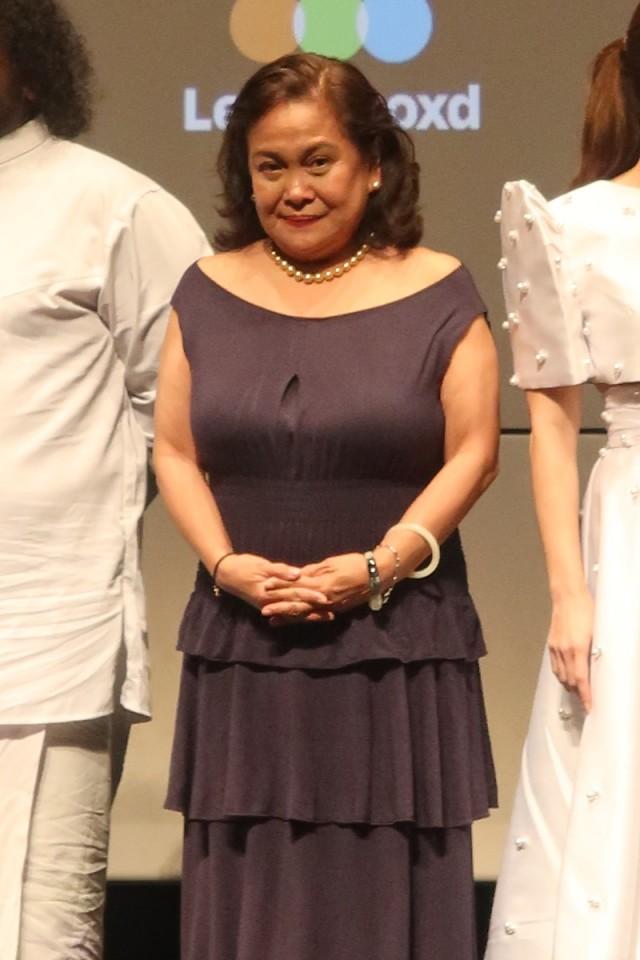Hollywood filmmaker Sean Baker, others rave over restored 'Bona' film in Cannes
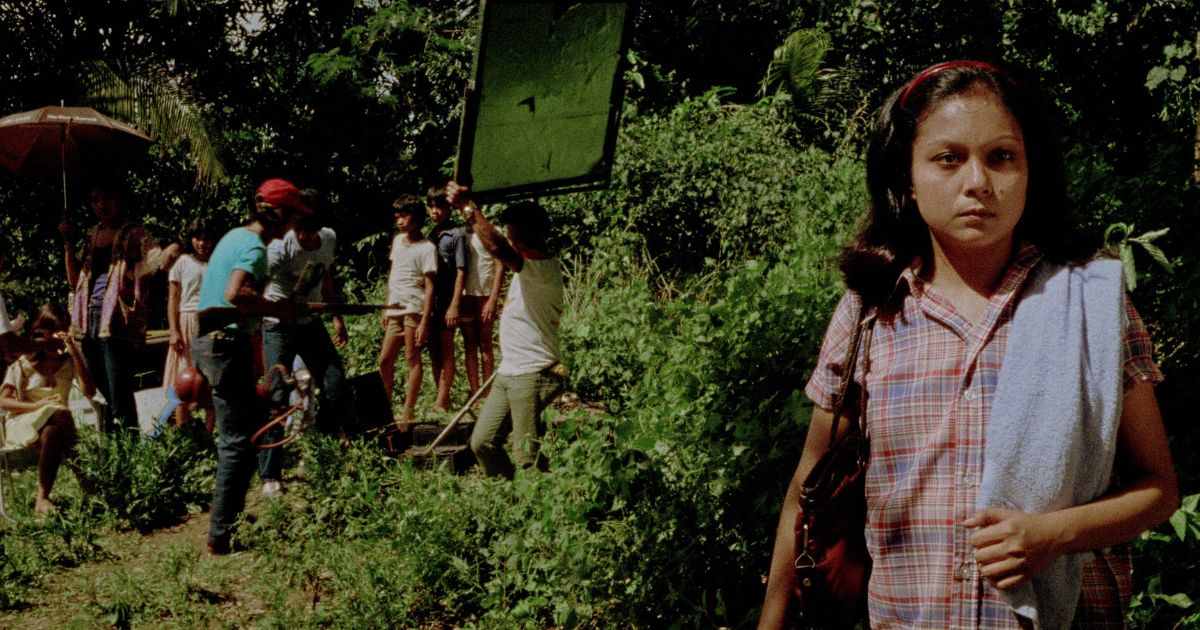
Hollywood director Sean Baker, whose latest film, "Anora," opened to a 10-minute standing ovation at the 77th Cannes Film Festival, applauded the restored version of Lino Brocka's obra maestra, "Bona," which starred Nora Aunor and Phillip Salvador.
The restored version was screened at Cannes Classics division and was introduced by Vincent Paul-Boncour, chief of Paris-based Carlotta Films, Gerald Duchaussoy, Head of Cannes Classics and Ariel Esteban Cayer, Co-Chief of Kani Releasing.
We were able to interview Baker and other Filipino filmmakers after the screening of the restored "Bona" film and below are our interviews with FDCP head Joey Javier Reyes, actress Ruby Ruiz who was also featured in "Bona" when she was only 18 years old, filmmaker Adolfo Alix Jr. who is in production on the sequel to "Bona," Vicky Belarmino of CCP and Cinemalaya and Jojo de Vera who both helped convince Nora Aunor to have the film restored, and Filipino Paris-based filmmaker Martin Arnaldo. Below are our interviews.
Sean Baker
Sean, have you seen this movie before or is this your first time to see it again? And what were your initial impressions?
Yeah, this is my first time seeing this Lino Brocka film and I was blown away. I'm so happy that this is the way I'm first seeing it because this restoration is glowing. It's incredible. It's like one of these ideal situations in which I've been told that they thought that the negative might be lost, but no, the negative was safe and sound in Paris in a lab. Obviously, it was placed there by Pierre Rissient, and thank God he did that because now we have this classic that has been preserved and the restoration has now made it something that people can enjoy for generations. And it's a powerful film. It's a very powerful film. The lead, Nora, is incredible in it. So, I'm really happy that it'll be getting a new life and because it really deserves an audience.
As a filmmaker yourself, what did you think of Lino Brocka's direction? And what films of Brocka have you seen?
I've seen Insiang, excuse my pronunciation. And I've seen Manila in the Claws of Light (Maynila, Sa Mga Kuko ng Liwanag), and Cain at Abel. So, I've seen those four because of the new restorations, but of course, I've always known about him being the most renowned Filipino director, and the first to play Cannes in competition. So, I'm really glad that I'm gonna be able to continue to explore his work. I have 62 films to watch. But why I'm drawn to him is because we both work in social realism and tackling the subject matter with this craft is right up my alley.
As a filmmaker, can you talk about Nora Aunor as an actress?
The very fact that she was one of the biggest stars from the Philippines and probably at the height perhaps of her fame at the time. Maybe not. I don't know.
She was at the time. She was only 27.
Oh, yeah, but the very fact that she took on a role like this.
And she produced it.
And she produced it is quite special. And that's a star playing a fan. That's meta in itself. But yeah, she's incredible and it's really beautiful that she was able to help with the restoration of this.
By coincidence the title of your new film is Anora.
I know right? That's so funny.
Joey Javier Reyes
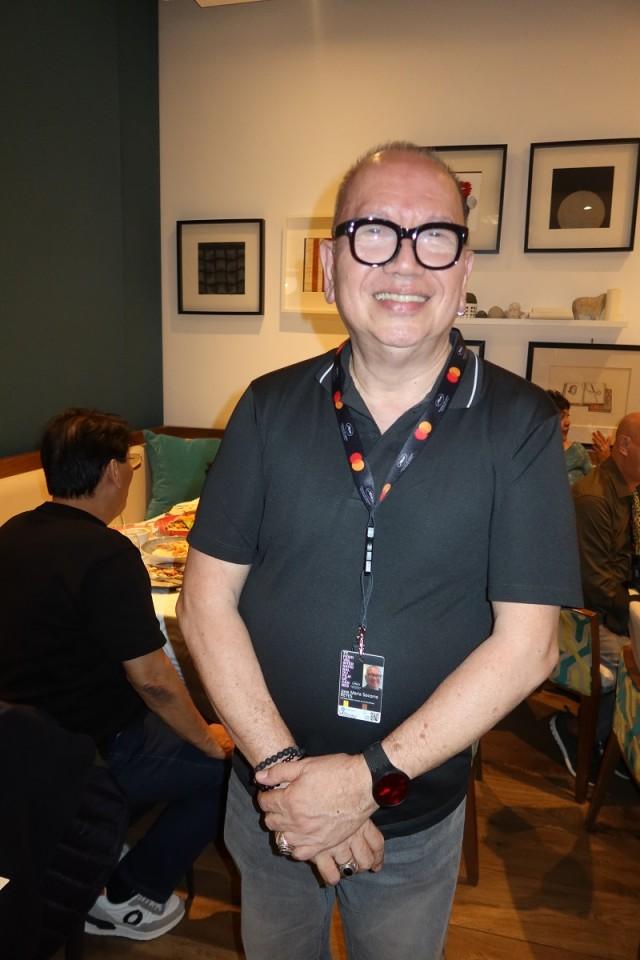
Congratulations on being the newly-appointed head of the FDCP.
Hi. Thank you so much for joining us here in Cannes and covering the activities not only of the Filipinos but then the other nations who are here in what is called the Mecca of world cinema. And thank you for the congratulations and as I always say, instead of that, wish me luck because of this new job I have.
Talk about the Philippine presence of cinema here in Cannes this year.
Well, this is the biggest contingent so far. This is the biggest contingent in the years of Philippine participation here in Cannes. We have 80 Filipinos who are here, who are involved in the various programs and the various activities held in this festival. I think one of the highlights is that the Philippines was the focus of the Director's Fortnight with the Director's Factory, of which there are four Filipinos who collaborated with Southeast Asian directors in order to create four short films that were lumped together to represent the Philippines in the Director's Fortnight. Over and above that, we have a lot of young filmmakers who are here pitching their stories, gaining attention, not only of the Asian region but European producers and the likes. Equally important is the producers' network. The producers' network is where we brought in producers to learn and at the same time network with producers not only from Europe but also from Asia and the Americas with the hope that eventually they will be able to come up with international co-productions which I think is the way to go in this post-pandemic scenario.
And the presence of Bona here in Cannes. Your personal connection to Bona? When did you first see it?
Oh, I saw that when I was a kid, literally a kid. Lino (Brocka) and Nora Aunor were two of my idols and Bona is one of his benchmark works. We found out about the possibility of the restored version of Bona being invited here in Cannes and we were excited but then we really could not say much until Cannes announced it. How did I feel about it? Well, proud.
Proud of the fact that Nora Aunor has gone into a full circle from the first time that it was brought here to now that it is being revived and brought to a completely different generation of audiences. I think that says a lot, not only about the premium of two national artists, Lino and Nora.
And what is my personal attachment to it? Well, anything which really celebrates Filipino heritage in cinema, I think is a reason to really celebrate. That's one thrust that FDCP wants to emphasize or at least in my time, that we have to respect, we have to recognize, and we have to acknowledge the masters of the past. This sounds like a cliché, but unless you give value to the past, then you will never know who you are in the present, but worse, you will never know what direction to take in the future. It is sad if a Filipino filmmaker is incapable of discussing and appreciating Bernal, Brocka, Marilou Diaz-Abaya, Gerardo de León, because these are the giants' shoulders we stand on today.
Of course, the Noranians want to know if Nora is arriving.
We really, really wanted her to come, but for health reasons, she has decided to stay home. Personally, I was worried because it's not easy to get here from where we come from. It's a 24-hour trip. It's not only a lot of sitting, it's a lot of endurance, and to be able to retain your energy for 24 hours and we were worried for Nora. We wish she were here because it would have been a full cycle. I don't want to think it's a swan song, but I think it catapults her into her stature as a National Artist.
What are the future projects of FDCP under your helm?
Oh God, a lot. I landed on the ground and started running to the point that I don't know if I have enough oxygen to keep me conscious until the end of my tenure. It goes something like this; three thrusts. First is education.
We are coming up with a big convention in September of the Academic Film Society. We created an association of all the universities and colleges that offer arts and film. We brought them all together and then we're going to have this really big convention so that students can network, teachers can learn from each other in terms of techniques and technologies they use for teaching, and then lastly for us to introduce them to the professionals. There'll be a meet and greet with their idol directors, their idol writers, and these students can talk.
But you know what is so important is we hope that students from all over the country would get together. Which leads to my second point; we want to give emphasis to regional filmmaking. We want to give a chance for regional filmmakers to be recognized and to be acknowledged in Manila because they are as much a part of Philippine cinema as our filmmakers in the metropolis.
When I get back, we're starting a program called Film for Peace. Film for Peace is using film for us to understand each other, not only within the country but hopefully the world. It's a program which will emphasize the filmmakers of Mindanao, the filmmakers of the Visayas. We have to understand who they are. And it is through that that we can perhaps achieve greater, not tolerance, but compassion and empathy, realizing that it is in our diversity that we are indeed Filipinos. And then I am very happy on professionalization.
OK, how is that? Not just anybody can be on the set. You have to be trained to be on the set. We don't want to have repeats of what happened to Eddie Garcia. That was an accident, but then such accidents can perhaps be avoided if the people working on the set, not only the DP (Director of Photography) or the cameraman, but everybody down to the crew, has to be trained and licensed to work on the set. We're working really hard to push that.
And then we have many more workshops. We're having our next Meissner workshop under Angeli Bayani, a Filipino actress. We have a screenwriters' workshop. And then we're coming up with an incubation workshop which is a plan that we have in FDCP which is still in the blueprint phase in which we will get the top 20 writers to offer materials and this will be incubated and eventually we will get the top 40, the top 20 writers to offer materials and this will be introduced to producers.
Ruby Ruiz
So Ruby, you were in Bona playing the younger sister of Nora Aunor. Can you please share memories of shooting that movie and being directed by Lino Brocka and acting with Nora Aunor? And how do you feel that 43 years later, Bona is back here in Cannes and you are here as well?
Bona was my very first film. I was 18 years old then if I remember right. Lino Brocka handpicked me to play the younger sister of Ms. Nora Aunor.
My call time on set was 7 am/7:30-8 am breakfast and as soon as I finished breakfast I went inside an empty room in the house where we were shooting, faced the wall in one corner and started rehearsing my lines.
Lino then was checking all the areas in the house with the Production Designer. Then, he was so surprised to find a girl facing the wall, at kinalabit ako, "Sino ito?" so I faced him and to his surprise, he saw me all in tears already.
"What are you doing here Ruby?" he asked. This was the scene during the wake of the father in the house.
I told him I was preparing for that scene. Then he blurted out into laughter. "Ruby, your scene is scheduled to be shot around 7-8 pm yet. Why are you preparing so early?" he continued to ask.
I answered "because I am nervous because my scene, my very first ever, will be with The Superstar."
I only had two sequences in the movie. The second scene was with Venchito Galvez who plays the father of Nora who scolds her infront of the family.
Of course I was star struck upon seeing Nora on set but I pretended not to be. My next film with Ate Guy was in Thy Womb (Sinapupunan). I was still an applicant member in PETA when I did Bona. Lino was our Executive Director then.
Nora Aunor really impressed me! She came on set prepared as well, in character and all! Ms. Nora Aunor deserves to be called The Superstar because she is. As an actress, she is very intense and genuine in her emotions.
Vicky Belarmino
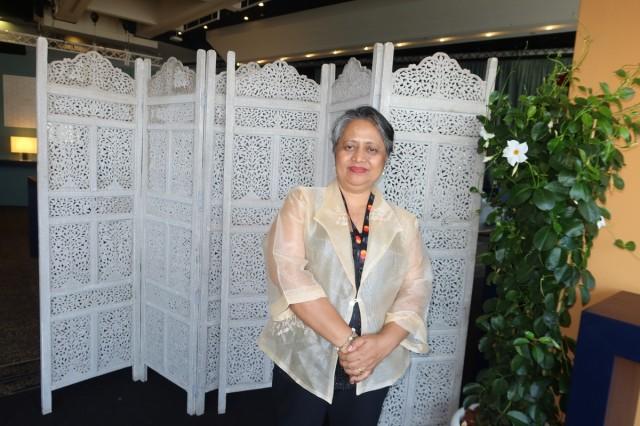
Thank you very much for your help in restoring Bona. So how does that feel to be up there watching it, which you helped restore? It's a great moment for Philippine cinema.
Quite honestly, this is the first time that I saw the full film. I did not see it when it was first released in 1980. I was still young then. I wasn't even with the Cultural Center yet. So, this journey of Bona back to Cannes is really a long journey. I'm sure you know how dealing with a national artist is. But we were able to pull it through. She was very cooperative since the time I started talking about the plans to restore it and maybe the possibility of it being shown here in Cannes this year. So, actually it was a blast because I was surprised when Vincent said that the target is to show it here now. I said, oh no, that's a restoration. It's like we don't know the process of restoration. It takes time. But thanks to Carlotta, Kani and The Lab who took care of the restoration, it's good.
Thanks for helping convince Nora to agree to the restoration. So, what was the final thing that finally convinced our national artist to say yes to the restoration?
Carlotta had to pay her a copyright permission fee to have it restored. And I'm sure knowing her, she also would like to see that film, which she produced 40 years ago, again on the widescreen.
She is very sad. I was helping her process the paperwork to come over and, in the end, she was not given permission by her doctors to fly in because of her condition. But she's very excited.
Sony Dabao Salvador
We're here with Sonny Dabao Salvador, a good friend of Lino Brocka. So, what were your thoughts when you're watching the movie again this time as a restored version?
It is so amazing. It is so wonderful that this has been restored because it was a great film. It was taken very well in 1980 and 1981 when it was here in Cannes. And it is so much a Lino film that it is such a pleasure to see it again on screen. Very, very well restored.
And were you on the set maybe several times during the filming of Bona?
Not on the set, no. I'm just a very good friend of Lino. Lino is a dear, dear friend of mine and we are just in the background.
How did you feel about watching Phillip Salvador and Nora Aunor in their scenes? They were so very good.
They are wonderful and I have to say if there is anything, Ate Guy is a wonderful actress and I have to say that for Phillip too. He is very good on film, he is very good with his craft, and I'm proud of that.
Did you watch it for the first time in the 80s?
Yes, when it was here in Cannes.
What did you think of the restored version? Because it looks so pristine, it's like a brand-new film.
It was a fantastic restoration, that's all I can say. It's really wonderful and it's so fantastic that something like that can be restored in such an extraordinary way. I was very thrilled and happy. It's almost like seeing it for the first time again after almost 40 years ago.
Do you remember what Phillip told you while he was making the film? Because he's so good in this one.
Thank you very much. If I remember clearly about this, this was a very intense coverage with Lino and Lino is actually really enhancing and getting it from the core of both the actor and the actress and I think Lino has really made it. I am proud that Phillip did a very good job with that.
Adolfo Alix, Jr.
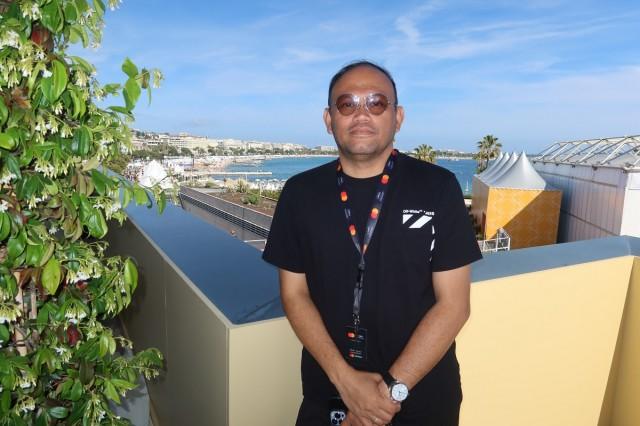
We're here with Adolfo Alix, director, and he also just saw the restored version of Bona here in Cannes. So how did it feel for you, especially Adolfo, that you're planning to make Bona 2?
Well, actually, I went after I saw it, because when I was young, I only saw the blurred copies, VHS copies. But now seeing it on the big screen, as if it was just shot yesterday, it feels good to see the performances, now you can clearly see how the characters develop and all. So it's timeless, it's a classic. Now I understand why Bona's character is so strong in the film, which I also really like when I was watching it. I even appreciated it more because of the details that you see on screen.
And now, it seems you're planning to make a Bona 2.
Right now, we're in development for the final story, and Ate Guy is involved in the process. She also wants to know the flow of the story, the inputs and all. So, probably this year we'll shoot it.
So, will she also be starring in the film?
Yes, she will be starring in the film. This will be what happens to her after 43 years. This was in 1980. So, we follow her character, what happened to her after 44 years. So that's the basic premise of the movie. What's your reaction again?
Is this your second, third or fourth time to watch Bona?
I saw it a couple of times before but the restored version... Well, the power of Ate Guy is in how she controls her performance. In the film, you see how at the start you feel the story is normal, she takes everything in. And then later on, like a volcano, it suddenly explodes. And the build-up is just beautiful. That's what I appreciated when I watched it, you feel like you follow her, you feel her emotions, and then when things start to get crazy and all, that's the right ending because you feel for her. You know what her character went through. So, when she does that to Gardo, you know that guy deserves what she did to him because of all the things he did. So, the level of performance of Guy is really good.
This afternoon while you were watching the restored version, did you have any new ideas?
Yes, I did. Because there are details that I saw for the first time on the big screen. So, I think we will discuss some ideas.
Additional casting?
We still have some things to discuss. But definitely, maybe within the year or later this year, we'll start production.
Martin Arnaldo
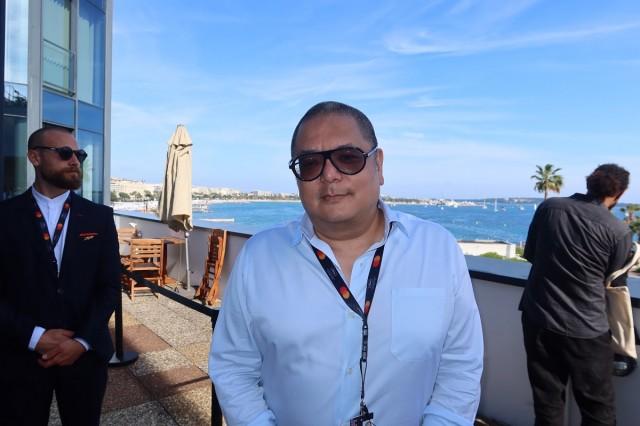
I'm here with Martin and I'd like to ask his opinion. Martin, is this your second or third time to watch Bona?
I saw the first preview last year, or was it the year before?
The first 20 minutes.
The first 20 minutes, which was really impressive to see a 4K restoration of such an incredible Filipino treasure. I was amazed. I was talking with the team who restored it a while ago, because there's this image when she enters the main room where you have this seat on the right side that's angled like this and then the window is angled like that, so it's completely not straight and it kept disrupting my attention because I'm a director and I'm always looking at things to be straight and all that so it was really frustrating me, but in the end I was realizing that that scene when she enters that room is like a metaphor of the madness that's going through her head. It's the only shot in the whole film which is not that straight. So, I was telling the restoration team, I kept wanting to put it back straight in my mind because I'm so maniac about my lines when I do my composing.
Having seen this restored version. What did you think?
I find it really beautiful because it's very strong and what's most beautiful is to hear the reactions in the room with the French audience that were laughing. It's not a comedy laugh, it's a very nervous laughter that was communicated. It electrified the entire audience. A film like Bona still resonates very deeply with the contemporary audience, which is fantastic.
And talk about Nora Aunor as an actress.
She's so intense from frame one, and I'm wondering, do we still write these things on the page about the intensity of a character? Is that still in the script? What part comes from her and what part comes from the script? What part comes from the director? How does he invent this intensity of this character? She pierces the screen from the moment of its opening. So, it's really a driving force where I wonder where it comes from, if it's on the page or in the director's interaction with Nora. I was really amazed.
Talk about the power of Lino Brocka. The film today still stands very well. It ages very well.
It ages very well, but it also questions very important things that are still relevant today. The opening is about this religious scene where people follow something very blindly and we go follow the story of this woman who has this passion for somebody whom she follows blindly. So, what's the relationship? Is that our culture? Is it our 350 years of colonization? And how does it relate to us today? I think it's still completely relevant.
Jojo de Vera
We're here with Jojo de Vera, a lover of cinema and a good friend of Nora Aunor, and we've just seen the restored version of Bona here in Cannes.
I love the restoration. I think it does justice to the film and it looks much, much better than when I first saw it back in 1980 at the Metro Manila Festival. But I just wanted everyone to know that this version is different from the one shown at the MMFF because there were scenes that were edited out for the MMFF but were added back to this version because Pierre Rissient thought that Nora didn't have enough scenes so everything that Brocka took out he had to put back in for this Cannes version and that Metro Manila Festival version is at the MoMA. I saw it years before at the Filipino Film Festival and that's exactly the same as the one shown in the Philippines. So, I hope that they will be able to negotiate a copy that will be an extra on the Blu-ray release soon.
How many minutes were added to this restored version?
Just a few minutes, maybe 10 minutes of footage. The footage that was added was usually the ones where Nora was fetching water, she was fixing the roof, she was selling bottles and magazines, and also the scene where she was writing her name on the pail. So those were added. Those were taken out of the original.
Do you think the restored version will be shown in the Philippines?
Yes, because Nora has the rights to Asia. Carlotta Film has the rights in Europe.
So not only in the Philippines but Asia?
She has rights for the whole of Asia. So, she can show it in the Philippines and around Asia if she wants to. That's part of our negotiation that she retains the rights, at least in Asia. So, Kani Releasing has North America and then Nora has Asia.
Can you comment on what this means for Philippine cinema that a film that was made 43 years ago is now shown as a Cannes classic?
This is one of the few movies that were shown in Cannes and then went back again years later. Insiang was one and then Bona, hopefully Jaguar will be one because it's also being restored now. But the important thing is the fact that classic films make us aware of what our culture was before. And we can learn from that culture. So, it's important for new filmmakers and younger audiences to appreciate and watch these films because they will learn so much from them.
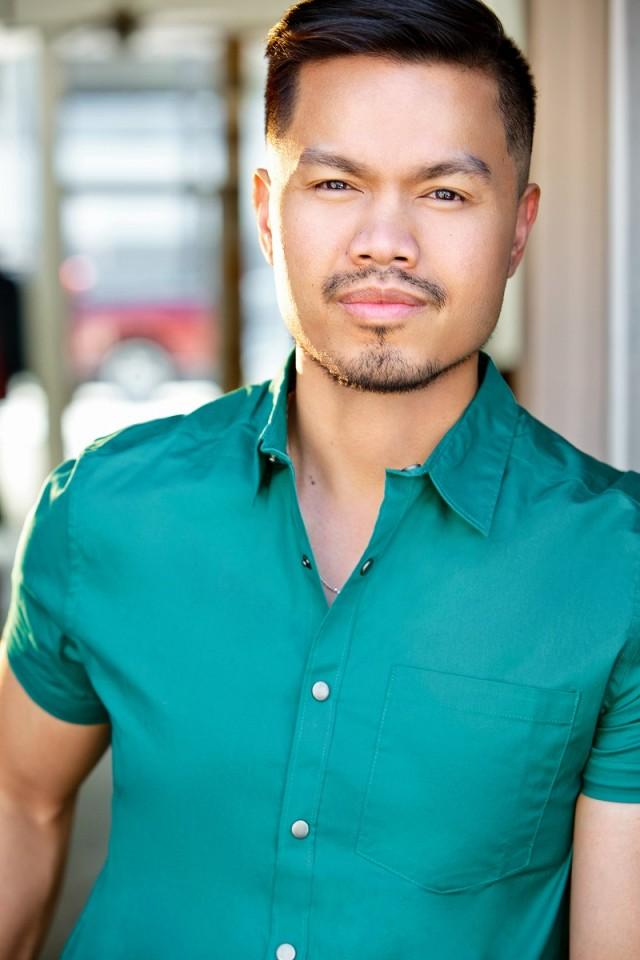
In the meantime, at the 24th Beverly Hills Film Festival, writer-filmmaker-actor Mark Labella premiered his short film Bare-Knuckle to an excited Los Angeles audience.
The movie is about an 80's throwback Hong Kong-style action film that not only thrilled audiences but also broke new ground in cinematic representation. Directed by Alex De Ocampo and written by the acclaimed Labella, whose notable credits include producing the 2022 international hit Labyu with an Accent, the film has already sparked considerable interest and anticipation for its full-feature version, with funding firmly in place.
Starring Kevin Kreider of Bling Empire fame, Devon Diep, and led by promising newcomers Jordan Mahr and Michael Naizu, Bare-Knuckle introduces a groundbreaking Asian action lead who is openly gay, challenging long-standing Hollywood stereotypes and offering a fresh perspective on heroism. The film's premiere saw a packed house and received rave reviews, signaling a strong appetite for diverse and dynamic storytelling.
The cast also features memorable cameos from Tommie Mopia in his big-screen debut and Celebrity Chef Marvin Aritrangoco, adding to the film's unique flair and appeal. "It was an honor seeing Filipinos lead this action film with powerful male and female Asian characters," said Mopia, reflecting the sentiment of empowerment and pride that permeates the project.
"At its core, Bare-knuckle is a mirror reflecting the harsh reality faced by AAPI LGBT youth, echoing the struggles that persist in a society that is meant to be progressing towards acceptance and understanding," stated director Alex De Ocampo. This poignant message resonates deeply with audiences and critics alike, positioning Bare-Knuckle as a film that transcends its action-packed sequences to touch on significant social issues.
The Beverly Hills Film Festival, known for attracting major stars like Sharon Stone, Al Pacino, and Jeff Goldblum, touted Bare-Knuckle as one of its most well-attended showings, further solidifying its status as a must-see film. With the script for the full feature already underway, the filmmaking team, led by De Ocampo and Labella, is gearing up for an exciting journey ahead, pushing boundaries and setting new benchmarks in the industry.
We were able to catch Labella to answer some questions for us via e-mail and below is our conversation with him.
How would you describe your short film?
Writing Bare-Knuckle came from a really personal place for us, dealing with those parts of ourselves we sometimes struggle to accept. It's about facing the truth of who we are, even when it's tough. And on top of that, we wanted to see an Asian male lead who's macho, sexy, can throw a punch, and just so happens to be gay. It's all about embracing who you are and showing that strength and authenticity on screen.
What was your inspiration for this short action LGBTQ film?
The inspiration for Bare-Knuckle came from someone director Alex De Ocampo knows—a man in a very macho profession whose sense of self-worth was tied to keeping his true identity hidden. When Alex approached me to write this project, it resonated deeply with my own past struggles with self-acceptance and regret. Coming out can be a profoundly difficult, sometimes internally violent experience, especially when forced. Allowing people to come out on their own terms is crucial, as pushing them can be incredibly harmful.
How did you decide on the casting?
Casting was quite the adventure! We don't usually have the budget for a casting director in microbudget SAG films like this, so I took it on myself, just like I've done with a few other projects. I dove into the breakdowns, handled all the online work, and created the sides. Then, I teamed up with producers Kevin Kreider, Devon Diep, Alex, Anita, and Roger to make our final picks. We did something we don't see much anymore—we held live auditions after sifting through a few hundred video submissions; it was crucial to me to find actors who could truly uncover and express the subtext of each line. I'll never forget Jordan Mahr being the last person we saw—I insisted everyone see him because his authenticity just shone through those video auditions. And Michael Naizu brought exactly the depth and nuance we needed with his experience as a lead in his previous full features. It was a labor of love, and I couldn't be happier with our choices.
On your director, Alex De Ocampo?
Alex was actually the one who approached me with the idea. I am proud to help him realize his vision.
What were the challenges of doing the flashbacks and then going back to present time? What made you decide on this style?
We wanted to explore the contrast between love and hate, especially focusing on self-love and self-hate. The entire piece is essentially a metaphor for the internal battle we all face. It's about the struggle between embracing our true selves and the voices that push us towards self-doubt. My hope is that the voice advocating for authenticity and self-acceptance ultimately prevails. However, I recognize that, unfortunately, for many people, it doesn't always end that way.
What other film festivals do you hope to showcase this aside from the Beverly Hills Film Festival?
I believe we achieved our goals with this film. Alex and the Bare-Knuckle team have secured backers for the feature film, and it was an honor to screen it in Beverly Hills alongside some well-established talent. Right now, our top priority is ensuring we have a fantastic script. Since I'm also juggling two other big international coproductions, the team is bringing on a talented female Pinay writer to co-write with me. I think it's a brilliant idea to bring in another perspective, and honestly, I really need all the help I can get right now. I am just so grateful. When it comes to work, I am a workaholic through and through! Bring on the work!
—MGP, GMA Integrated News


